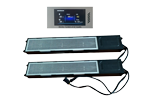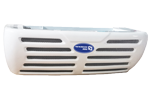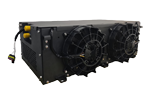There is a photocatalyst in the NEWBASE bus air purifier. What is the function of the photocatalyst?
Under the action of ultraviolet light, the electrons (eˉ) in the valence band of the photocatalyst transition to the conduction band, and corresponding holes (h+) are generated in the valence band, and superoxide ion radicals and hydroxyl radicals with strong oxidizing effect are generated. , superoxide hydroxyl radicals, not only can oxidize and decompose toxic and harmful gases, pollutants, odors, bacteria such as formaldehyde, benzene, toluene, xylene, ammonia, TVOC and other toxic and harmful gases into harmless CO2 and H2O, but also have high-efficiency broad-spectrum It has excellent disinfection performance and has a good inhibitory and killing effect on various common pathogenic bacteria.
Generally, antibacterial agents only have bactericidal effects, but cannot decompose toxins. Photocatalysts can completely decompose bacterial remains and residual toxins in the body to achieve the purpose of thorough disinfection and sterilization. It has been proved by scientific experiments that photocatalyst has strong killing ability to Pseudomonas aeruginosa, Escherichia coli, Staphylococcus aureus, Staphylococcus albus, Klebsiella pneumoniae, Salmonella, Bacillus and Aspergillus. So as to achieve the purpose of purifying toxic and harmful gases in the air, effectively controlling the cross-infection of bacteria and viruses and inhibiting the reproduction of bacteria.
The photocatalyst itself does not change or lose itself during the action process, but only provides a reaction place. It has the advantages of lasting time, continuous action, stable nature, safety and non-toxicity, and does not produce secondary pollution. It is an internationally recognized green, environmentally friendly and pollution-free product.
Photocatalyst enhances the purification effect of the bus air purifier.









.png)






